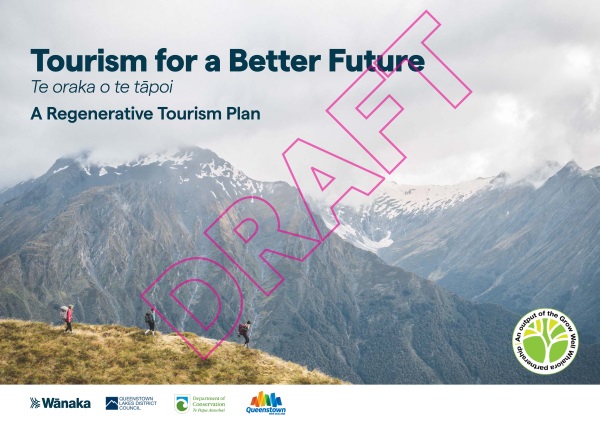
We have a plan, and a better understanding of ‘regenerative tourism’, but questions are
already being asked about where the money’s coming from to make it a reality.
Last week the Southern Lakes’ draft destination management plan, ‘Tourism for a Better Future’, was released for public feedback.
It’s been developed by Destination Queenstown (DQ), Lake Wānaka Tourism and Queenstown’s council in conjunction with Kai Tahu and Department of Conservation (DoC), and sets out a pathway to regenerative tourism by 2030.
DQ chief executive Mat Woods says the strength of the plan lies in the collaborative approach.
‘‘This is the first time I think we’ve seen the two RTOS, the council, DoC and Kai Tahu actually work together.’’
iFly director Matt Wong says the plan finally gives businesses an idea what regenerative tourism actually is.
‘‘A lot of us have been floundering, going, ‘well, what does it actually mean? What are
the goals that we need to achieve [to be] regenerative? What is the public sentiment about it? And what are the responsibilities on the stakeholders, and who are the stakeholders?’
‘‘It still doesn’t give you a clear defined pathway of how you become regenerative.
‘‘The devil will be in the detail, and that’s expected as well, it’s a big, chunky document,’’ Wong says.
The 59-page plan outlines four categories — economic, social, environmental and cultural — and defines regenerative tourism as having a net positive impact on each of those categories.
It then sets out four pillars — building communities, enabling regeneration, demonstrating leadership and working together — under which 19 projects are outlined.
‘‘It’s a pretty aspirational goal for the tourism industry,’’ Wong says.
‘‘We just need to pick off little bits at a time and work on the things we’re strongest at, and then look at, ‘OK, what aren’t we doing well? Let’s work on that next’.’’
For Hotel St Moritz general manager Jo Finnigan, the plan validates what the hotel’s already doing.
‘‘We have been active in the area of sustainability and sustainable tourism for years … this [plan] will probably galvanise some efforts, so that the community can actually see and feel the benefits of tourism more clearly,’’ she says.
Since 2018, the hotel has stopped using plastic bottles, has moved toward large-format amenities, replaced slippers with bedsocks, and supported several community charities.
Similarly, Wong is ‘‘chuffed’’ iFly is already meeting some of the plan’s aspirations.
‘‘We’ve got a great community project started, we’ve measured our carbon footprint, and we’re going to look at offsetting, and we’ll be carbon neutral by next year,’’ Wong says.
Woods says, as of Monday this week, about 200 people had viewed the document.
Feedback closes on August 10 and once that’s collated, it’ll be signed off by council, Tourism Wānaka and DQ.
A destination management office will also be established, governed by a combination of independent directors and representatives from ‘‘key organisations’’, tasked with finding the money to execute the plan.
‘‘We’ve got strategic tourism assets protection programme funding to help build the plan, we don’t have any additional funding to deliver the plan,’’ Woods says.
‘‘So where’s that funding going to come from to deliver [it]?
‘‘I think that’s the probably the really most important question right now.’’



